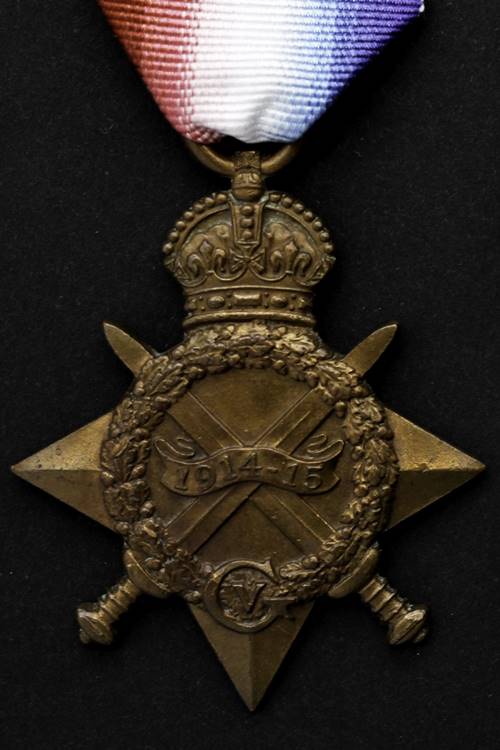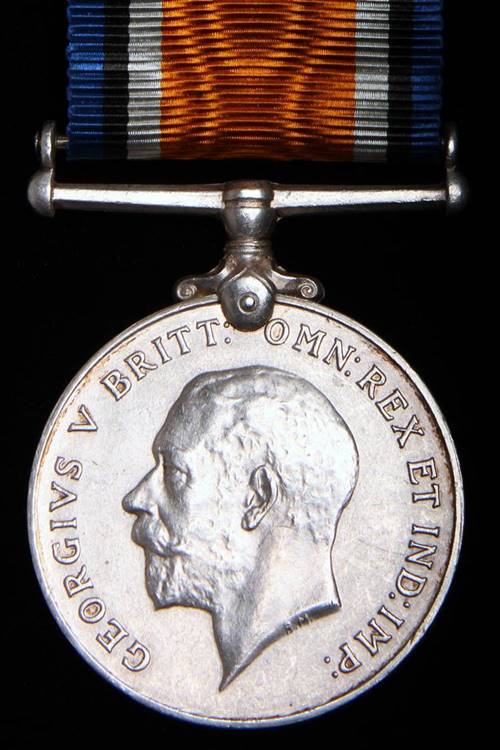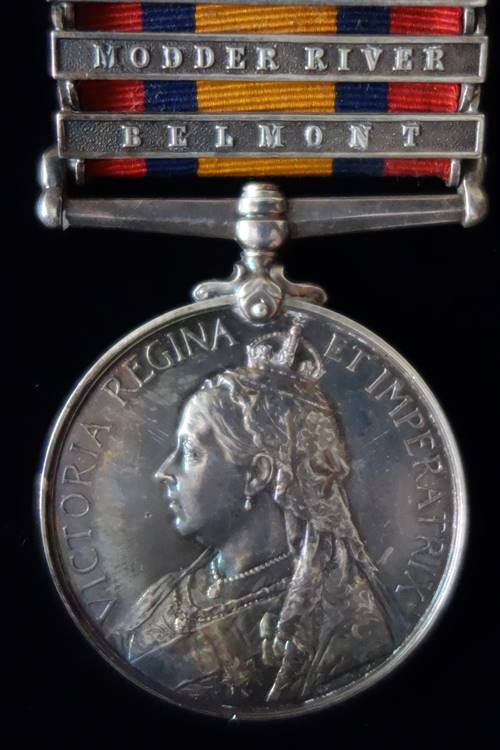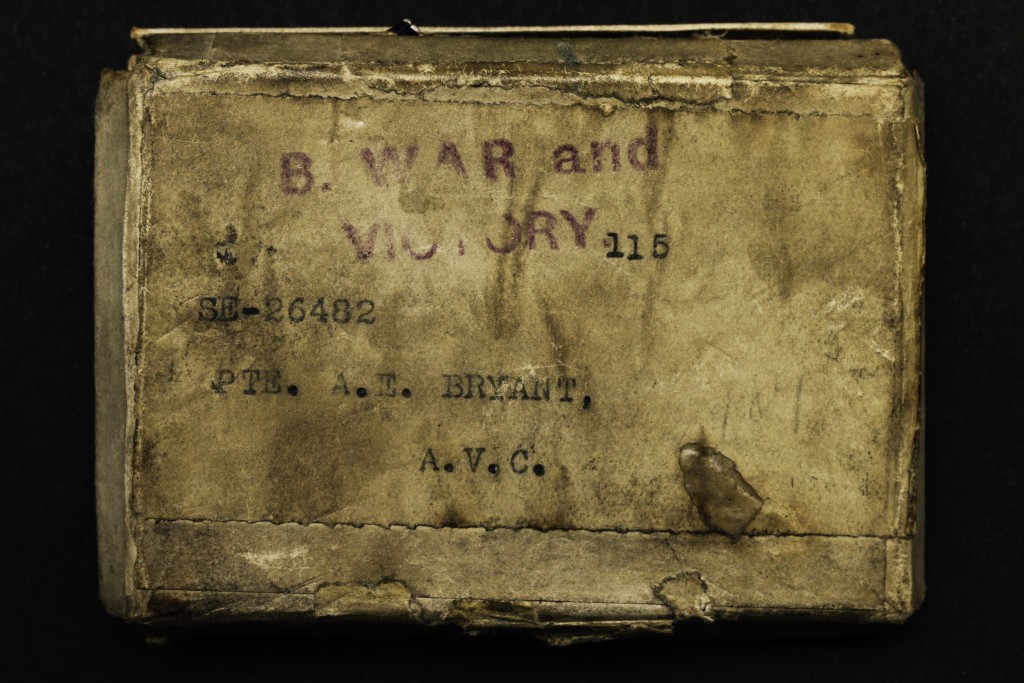This page will provide you with a brief overview of the four most widely awarded campaign medals of the First World War along with other medals often encountered with them. Detailed guides to each of the medals can be found by clicking on the photographs of each medal or by clicking on the links below:
- 1914 Star (Mons Star)
- 1914-15 Star
- British War Medal
- Victory Medal
- Territorial Force Efficiency Medal
- Queen’s South Africa Medal
WW1 Medals
Millions of men and women who served in the armed forces during the First World War were awarded campaign medals. In the majority of cases they received more than one and they are the best way to start your research into a First World War soldier. This is due to each medal having the recipient’s regimental number (officers and some organizations like the Y.M.C.A. didn’t have them), rank, name and unit (British War Medals and Victory Medals to officers did not have a unit) impressed either around the rim or across the back of the 1914 and 1914-15 Stars. With this information, you can quickly find the soldier’s medal Index card and corresponding medal roll/s and begin your search for other records. I have created a number of guides which will help you to research a soldier who served in the First World War which can be viewed by clicking the link below.
Guides to Researching First World War Soldiers
An example of a 1914-15 trio can be seen below. This set of First World War medals is commonly encountered by descendants, with over 2.4 million being issued. Over the last ninety years, many medal groups have been split up, however, a single medal will still provide you with all the key details to begin your research.
1914 Star (Known as the Mons Star)
The 1914 Star was awarded to members of the British and Indian Expeditionary Forces, who served in France and Belgium between 5 August 1914 and 22 November 1914. This medal is often called the Mons Star after the famous battle which took place on 23 August 1914, though the vast majority of those who qualified for the medal took no part in the battle. Due to its brief award criteria, it is the most useful medal when researching a soldier’s service. The medal was impressed on the reverse with the rank held when the recipient first entered a theatre of war. Once a soldier qualified for the 1914 Star, they also automatically qualified for the British War Medal and Victory Medal.
1914-15 Star
The 1914-15 Star was awarded to those who served in a theatre of war between 5 August 1914 and 31 December 1915 and did not qualify for the 1914 Star. A wide variety of different theatres of war qualified a soldier for this medal, ranging from the Siege of Tsingtau in China to service in East Africa and Gallipoli. Like the 1914 Star, the medal was impressed with the rank of a recipient when they first entered a theatre of war. The 1914-15 Star could never be awarded on its own and a recipient would automatically qualify for the British War Medal and Victory Medal.
British War Medal
The British War Medal was the most common campaign medal issued for service during the First World War. It has the most complex award criteria for any medal issued during WW1. In essence, to qualify for the award a soldier would have to serve overseas, though not necessarily in a theatre of war, between 5 August 1914 and 11 November 1918. For the British Army, this meant service outside of Britain and Ireland. Most of those who only qualified for the British War Medal, did so through service in India and Burma during the war. Around the rim was impressed the highest rank held by the recipient when the Armistice came into effect on 11 November 1918. The British War Medal was the only British campaign medal of the First World War which could be awarded on its own. Approximately 100,000 were issued in bronze and awarded to units raised throughout the Empire with the majority going to the Indian and Chinese Labour Corps.
Victory Medal
The Victory Medal was awarded for service in a theatre of war between 5 August 1914 and 11 November 1918. The Victory Medal was never awarded on its own and was always accompanied by a British War Medal. The recipient’s details were impressed around the rim of the medal and include the highest rank held when the Armistice came into effect on 11 November 1918. The medal’s obverse it the winged figure of Victory holding clutching a palm branch which symbolises victory and triumph.
Territorial Force Efficiency Medal
While not a British campaign medal of the First World War the Territorial Force Efficiency Medal is often encountered in WW1 Medal Groups. The medal was awarded for 12 years service in the Territorial Force and just under 50,000 were issued.
Queen’s South Africa Medal
The Queen’s South Africa Medal is often encountered amongst First World War medal groups and was awarded for service in the Boer War 1899-1902. Medal rolls are available online which record the clasps, if any, the recipients qualified for. This medal was worn to the left of First World War campaign medals.
Where can I find WW1 Medal Records?
Over the last hundred years, many of the First World War medals which were originally worn as a group have been split up. If you only have a single medal in your possession, you can find out what a recipient’s entire qualification was by looking at their medal index card. There are two ways to view a medal index card, the first is using the National Archives’ website and the second is using the genealogy site Ancestry. The National Archives’ cards are in black and white and don’t show the reverse. I would recommend signing up to Ancestry which offers free access to the cards and usually has a free trial period so you can also view the corresponding medal roll. The medal roll is a very important document as it will often list the specific units a soldier served with abroad. You will also need to use FindmyPast as this website has other military records which aren’t available on Ancestry and a better search system.
I have written a separate article about finding First World War medal records:
Researching WW1 Soldiers Using Medal Index Cards and Medal Rolls
Below is the medal box for my great-great-grandfather’s medals which were the British War Medal and Victory Medal. If a soldier’s service record has survived you will often find receipts for them. The medals were never worn and have sat in my grandfather’s cabinet for the last forty years. The box and the medals contain all the information I needed to start my research.







